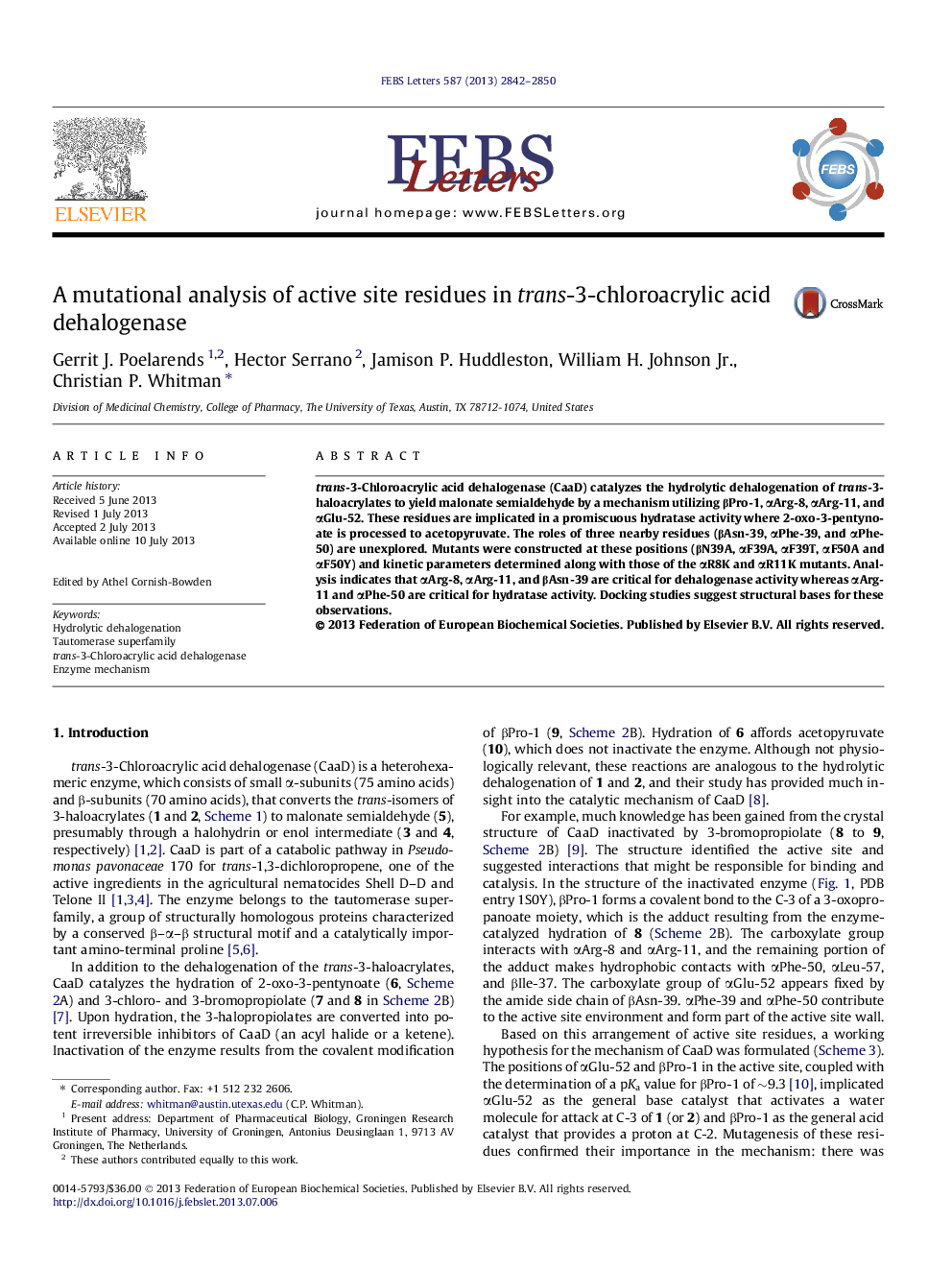| Article ID | Journal | Published Year | Pages | File Type |
|---|---|---|---|---|
| 10870871 | FEBS Letters | 2013 | 9 Pages |
Abstract
trans-3-Chloroacrylic acid dehalogenase (CaaD) catalyzes the hydrolytic dehalogenation of trans-3-haloacrylates to yield malonate semialdehyde by a mechanism utilizing βPro-1, αArg-8, αArg-11, and αGlu-52. These residues are implicated in a promiscuous hydratase activity where 2-oxo-3-pentynoate is processed to acetopyruvate. The roles of three nearby residues (βAsn-39, αPhe-39, and αPhe-50) are unexplored. Mutants were constructed at these positions (βN39A, αF39A, αF39T, αF50A and αF50Y) and kinetic parameters determined along with those of the αR8K and αR11K mutants. Analysis indicates that αArg-8, αArg-11, and βAsn-39 are critical for dehalogenase activity whereas αArg-11 and αPhe-50 are critical for hydratase activity. Docking studies suggest structural bases for these observations.
Related Topics
Life Sciences
Agricultural and Biological Sciences
Plant Science
Authors
Gerrit J. Poelarends, Hector Serrano, Jamison P. Huddleston, William H. Jr., Christian P. Whitman,
